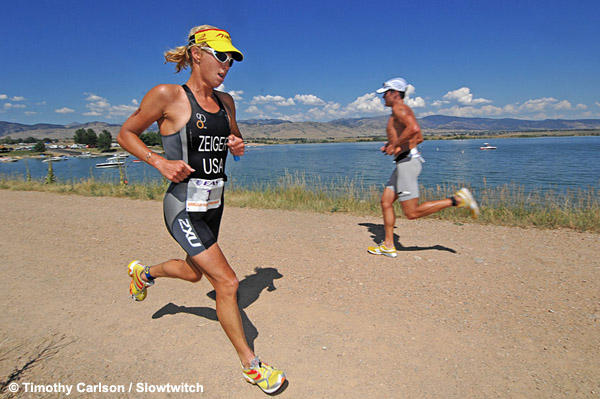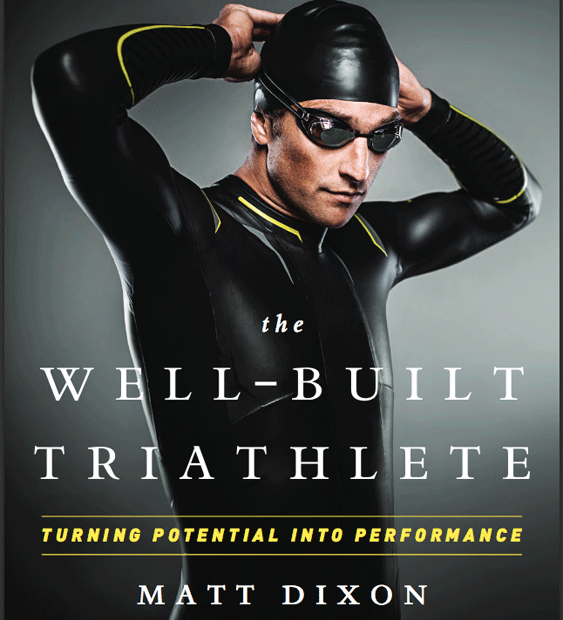Dirk Bockel offers Triathlon Guides
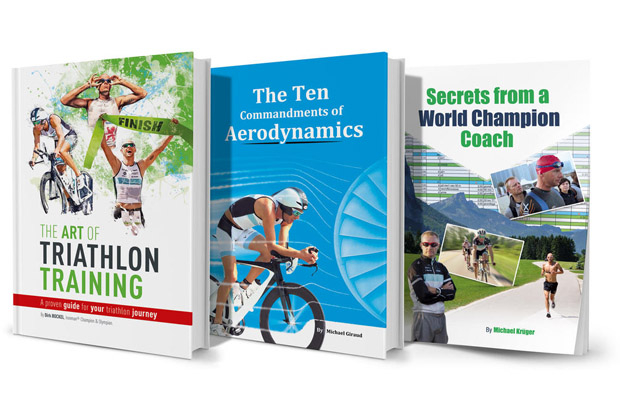
Dirk Bockel, the German-born, Luxembourg-representing retired international triathlon star and current coach, has written an insightful, detailed, and philosophical treatise on the sport entitled “The Art of Triathlon Training – A Proven Guide for Your Triathlon Journey.”
In 299 pages (Amazon Paperback US), the multiple Ironman champion and 2008 Olympian, whose career highlights include a 4th place at the Ironman World Championship and a 7:52 finish at Challenge Roth, offers a clearly outlined triathlon training guide for everyone from beginners to triathlon vets looking for time saving changes for personal success. Bockel covers a wide range of issues with clarity, including overcoming fear of open water swimming, fine tuning nutrition, mastering the mental game, and accessing key tools and advanced training methods.
The most satisfying aspect to this reader are his insights that accompany the chapters – drawn from an eclectic and inspiring roster of thinkers including Benjamin Franklin, Confucius, Aristotle and novelist Annie Proulx. Bockel is no slouch with his inspiring writing either: “We are mere mortals catching a glimpse of greatness out of the corner of our eye. A spark lights the fire and we are compelled to act, and ultimately jump into that fire. Doubt might creep in, but as part of the process, it fuels us forward as we construct a path of our own personal triumph.”
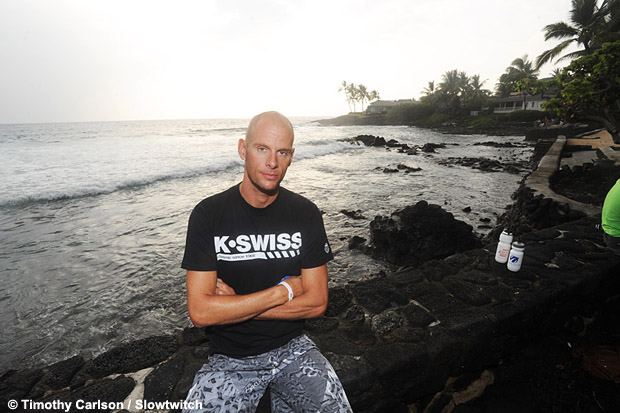
Bockel urges the reader to overcome all athletic obstacles in a crusade to “fulfill our destiny, bolster our confidence, find our peace, and find ourselves.” Yet Bockel also recognizes that this journey is a failure if not accompanied by a balanced life. “We train and compete to prove that we are able, no matter the disability, no matter the aching muscles, no matter the mental stress and strain. We take our families along so our lives remain balanced and steady. Sometimes we trek solo because our story demands it. We struggle to reach the summit and amidst the struggle, our lives become enriched and expand.”
These grand summaries come at the finish of many detailed chapters. The first is “Laying the Groundwork,” a treatise on step by step planning that urges strategic thinking that will lead the reader to lofty goals such as finishing Kona. In this chapter, Bockel touts visualization and faith as the strongest mental weapons: “Once your mind believes something, the body will follow.” Bockel reaches into his own experience to teach another important lesson – adaptation. While preparing for an early Ironman in 2009, Bockel decided to shift from a short distance running style into a shorter, more frequent stride prevalent in long distance racing. With unrestrained enthusiasm, he quickly suffered plantar fasciitis and a calf injury which prevented him from running for the final 7 weeks of training. His solution? “I adapted to my injury by replacing my run training with aqua jogging, cross training on the elliptical machine, and more mileage on my bike and swim.” The result? “Come race day, I was close, really close. I didn't quite make it to the very top that time around, but the quality of this experience fueled the momentum needed to make it to the podium, securing my Kona qualification slot.”
Further chapters include “Gear,” which is neatly summarized by a quote from Confucius: “The expectations of life depend upon diligence; the mechanic that would perfect his work must first sharpen his tools.” While taking care in preparation, Bockel urges the reader not to bank on a bankroll: “One of the biggest myths in our sport is that speed can be purchased. Alas, you can’t buy speed.”
“Training” covers the crucial importance of consistency and creating the circumstances of long term repetition. “Race Day” covers warm-up, mindfulness and focus on being present on the big day. Finally, “Transitions” covers the emotions leading up to and following the accomplishment of the athlete’s first big goal. And therefore, as triathlon is but a part of life, the perspective this triumph brings one: “Through your triathlon training you have learned discipline and perseverance. Use this very valuable tool as you move in the direction of your life's purpose.”
Not content to simply present his own book, Bockel has assembled more specialized companion works by experts in the field whose value is in inverse ratio to their brevity.
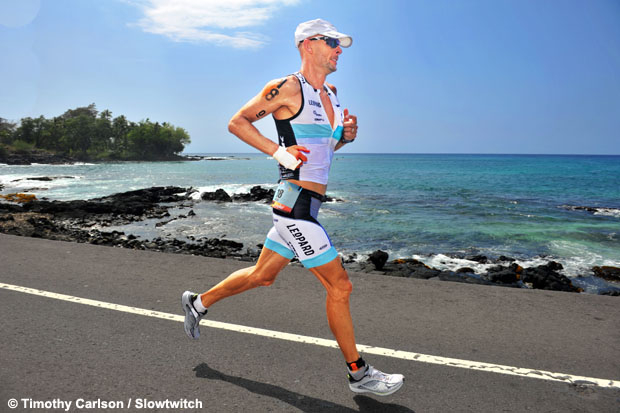
Secrets From a World Champion Coach, by Michael Krüger is a 16-page compendium of concise wisdom of Bockel’s first coach and the coach of Denmark stars such as Torbjorn Sindballe, Rasmus Henning, Helle Frederiksen, Jordan Rapp of the U.S., and many others.
Krüger has more than 20 years of experience coaching top-level triathletes. He has lead athletes in qualifying for 4 consecutive Olympic Games (from Sydney to London), three Triathlon World Championships, six European Championship titles, and multiple Ironman Championships. He worked as the national coach and performance director for the Danish Triathlon Federation from 1992-2013.
Krüger starts off with the unsexy but crucial advice: “Hours spent away from one another and extreme fatigue can take a toll on the relationships in your life. Make sure you manage each other’s expectations and are clear about the investments on both sides to ensure your IM project doesn’t burn out before you get to the start line.”
He urged patience for the big goals: “Like many projects, some things take weeks, months or even years to accomplish…”
Krüger offers a set of key Golden Rules:
“1. Continuity. To get the best possible outcome, you will have to train week in and week out, for years. That said, you will very often see highly trained athletes coming back after time off from injuries, improving their performance simply because they are highly motivated and had time to rethink their approach. 2. Recovery. Even the fastest racecars aren’t meant to go full throttle all the time. Plan your recovery on a weekly basis—easy days and off days are essential to your progress. On a yearly basis, factor in weeks where you can train easily to recover both physically and mentally. 3. Progression. If you want to be at your fittest on a certain day of your season, your training load needs to be progressive and the climax of the load of hours trained should be between 2 to 8 weeks before race day. 4. Variety: Your training load is made up of two factors—training volume and training intensity. High intensity training has a limited window for potential improvement. After 4 to 8 weeks it is not likely to produce any significant progression and you will need to back it up with low intensity training. 5. Planning: Have your season plan in mind and stick to it for a few months before you make changes.”
Krüger emphasizes common sense recipes that are often overlooked in the zealous pursuit of increasing speed: “Are you able to step up from training to race performance? If not, are you digging so deep in training that it is more like a race to you?”
Mike Giraud’s The Ten Commandments of Aerodynamics contains 23 pages of aero wisdom that were crucial to Bockel’s bike domination and international long course success.
While Giraud’s basic principles may be well known to experts, he starts with principles that provide a sound basis of understanding for the beginner: “Aero drag is the single greatest force an athlete has to overcome when riding.” He cautions that the subject is quite complex. “Aerodynamics is a science that experts are still learning about and exploring. It is intangible and cannot be easily measured, and unlike weight or power, there are no handheld devices out there that can provide you with instant results.”
If you did not quite grasp how serious the pursuit of optimum aerodynamics is, Giraud offers a final maxim for the amateur: “The overwhelming complexity of the variables has made it impossible to provide reliable and valid data. Testing methods using a wind tunnel, Alphamantis Technologies track testing or Computational Fluid Dynamics (CFD) are all great ways of achieving optimal aerodynamics, but most athletes don’t have access to these high tech methods.”
Once the warnings are imparted, Giraud lays out the key commandments of aerodynamics. The terms get quite technical, but Giraud offers no-nonsense perspective. “Where does the power produced go? 85% is used to overcome aerodynamic drag, 10% is used to overcome rolling resistance and 5% is used to overcome drivetrain friction… Looking at the 85% computed for aero drag, approximately 3/4 of that number comes from the rider and 1/4 from the bike.”
Giraud starts his aero principles with body position. “Start with a solid body. As you spend more and more time cycling, you will develop muscle groups that will stabilize you far greater than when you first began cycling.” Giraud emphasizes that each person has a unique aero footprint. “No two people have identical body measurements, flexibility, body hair, skin texture, or any number of other unique identifiers that create your aero fingerprint.”
Giraud says that every triathlete, from beginner to pro, should maximize his or her aero profile: “Many people think that they don’t go fast enough for aerodynamics to matter to them,” Giraud writes. “This couldn’t be farther from the truth. Firstly, speed is only one part of the equation. Your apparent wind speed is the sum of your velocity plus the dynamics of the atmosphere around you. This has an impact on drag numbers. For example; if you are riding along at 20 mph according to your computer or GPS, and you are riding into a direct 10 mph headwind, your apparent wind speed is 30 mph.”
Finally, Giraud urges the reader to realize that aerodynamics is more important than dollars poured into equipment: “Your body accounts for around 75% of the drag you feel while riding. Not to say that bikes and equipment aren't important factors, but there is more to gain by finding that ideal position than by bolting on that new super cool aero goodie.”
Giraud adds that aerodynamics must be balanced by an overall energy equation. “If you are a pure cyclist and are competing in a 20k to 40k time trial, the order would look more like: aero, power, efficiency, and comfort.” On the other hand, says Giraud, the long course triathlete has different priorities: “Efficiency, comfort, aero, and then power” are the Ironman priorities. “You are on the bike for anywhere from 4 to 8 hours and many things need to happen during that time. Most notably is fueling up for the run. You can’t go into the run in a caloric deficit and if your cycling position doesn’t allow for proper digestion of the food you consume.”
THE WHOLE PACKAGE
Bockel offers these three books plus videos “Injury Prevention & How to Heal Quickly,” and a video and audio “MINDFULNESS in sports & MEDITATION” by Bockel and Simon Kessler for a price of $49.
For more information contact: http://www.liveandlettri.com/products/
All three written books are available on Amazon as paperback as well as a Kindle version.
The Art of Triathlon Training – a Proven Guide for your Triathlon Journey by Dirk Bockel. 299 pages. $27.99
The Ten Commandments of Aerodynamics by Mike Giraud. 23 pages. $8.99
The Secrets of a World Champion Coach by Michael Krüger. 16 pages. $6.99.
Injury Prevention & How to Heal Quickly 20:23 video narrated by Dirk Bockel (edited by Tim Hensgen, RTL Luxembourg). $5.99.
MINDFULNESS in sports & MEDITATION 12:25 minute video and guided meditation audio – with Simon Kessler and Dirk Bockel. $5.99.


